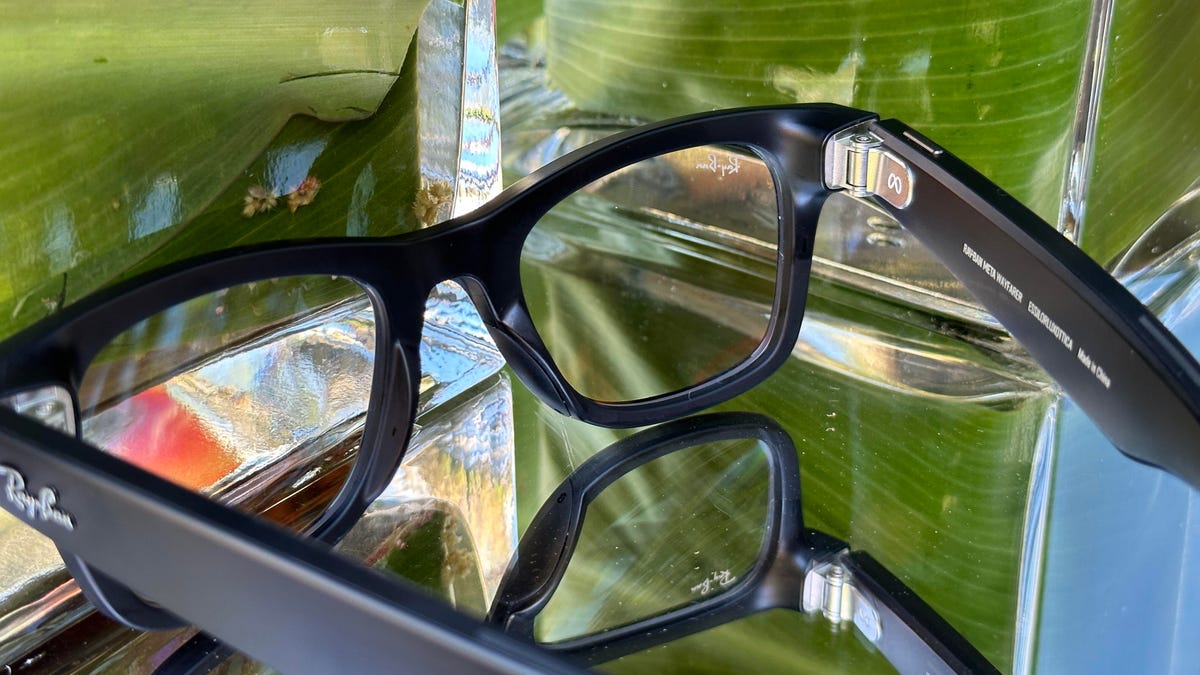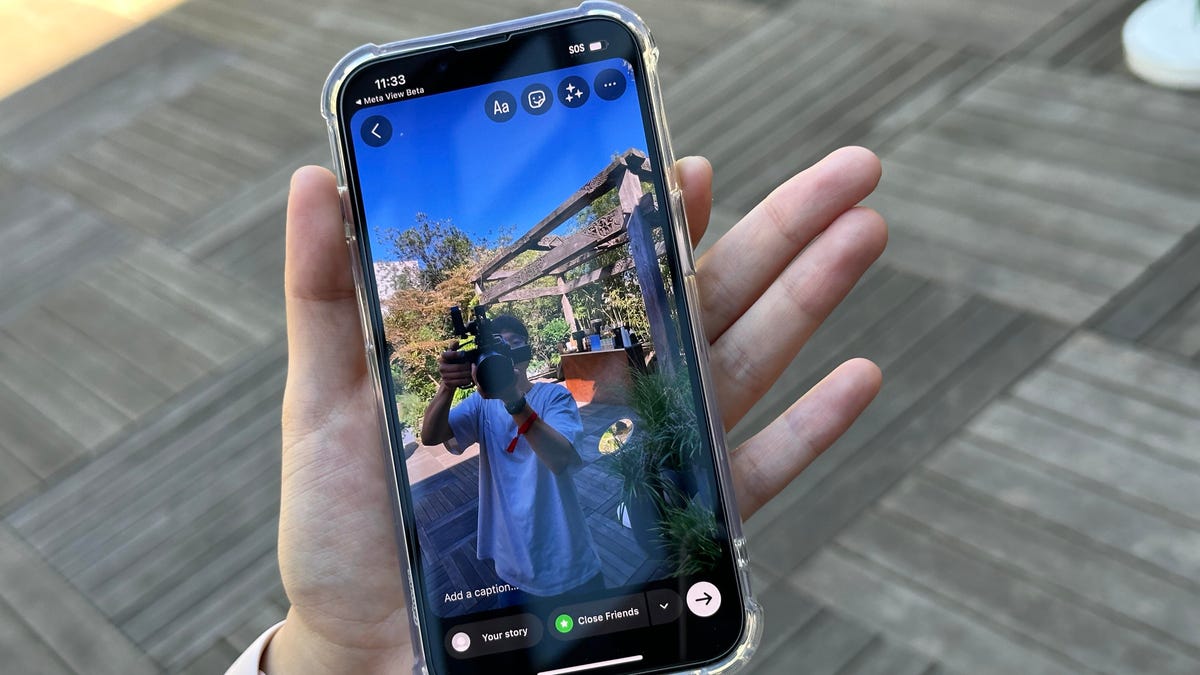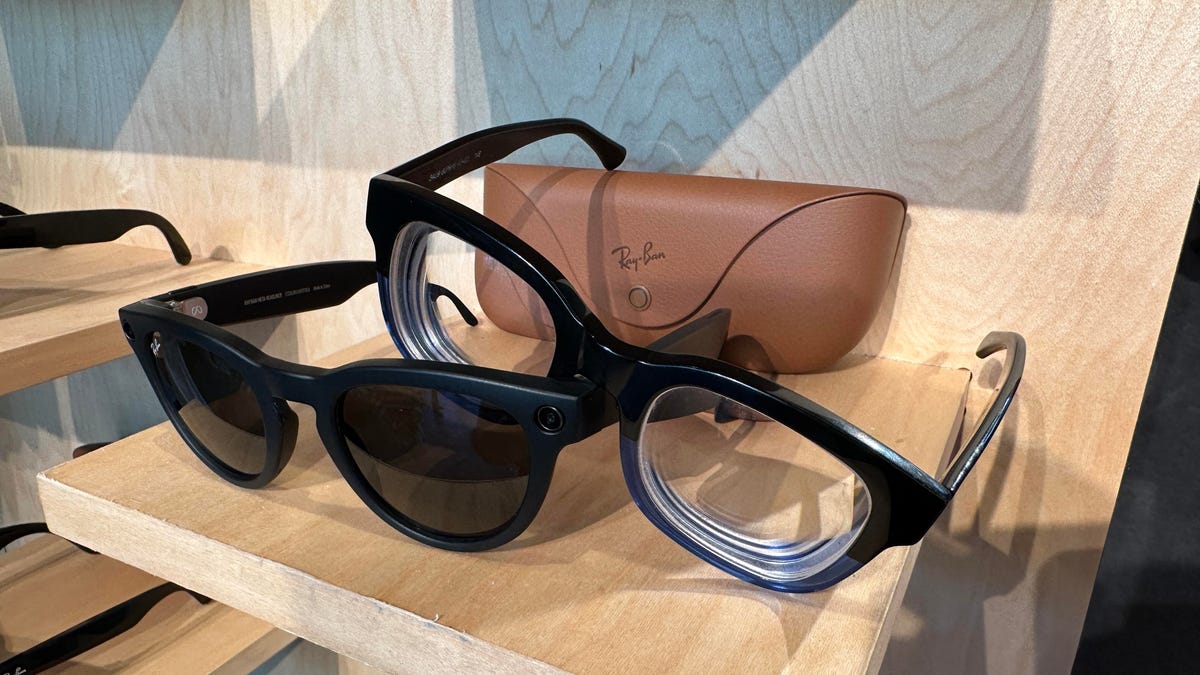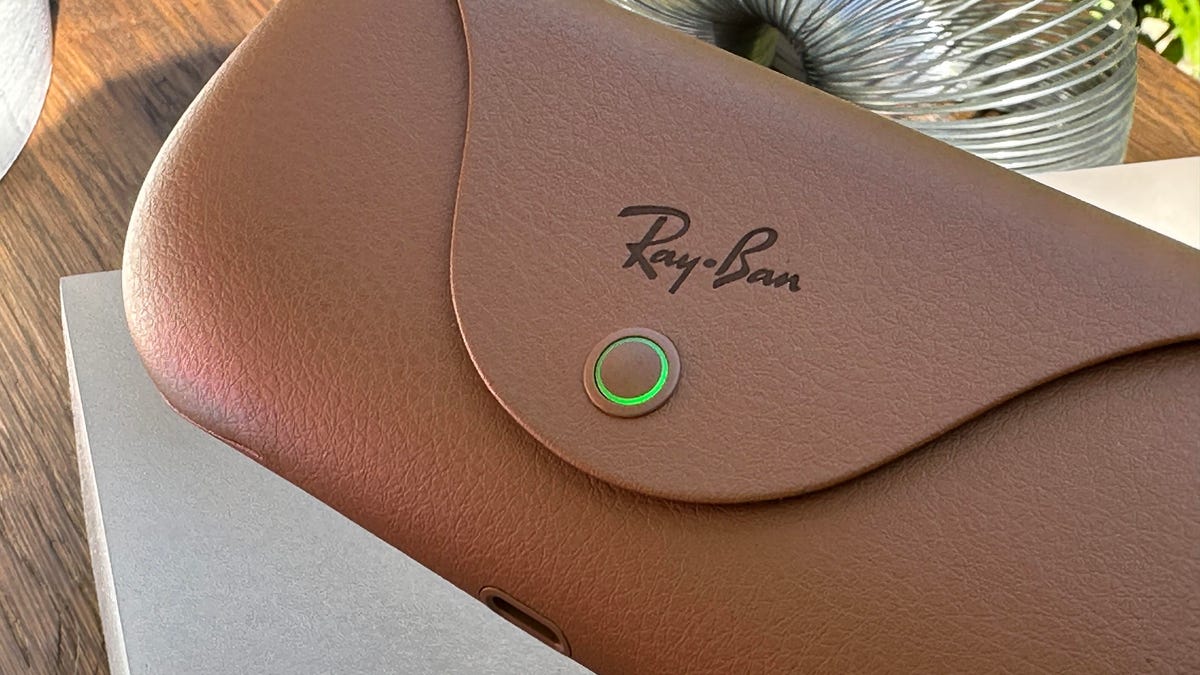I look at myself through the camera of the phone in my hand: I’m wearing pretty normal-looking Ray-Ban glasses. A tap of a button, and now I’m streaming video from the Ray-Bans straight out to Instagram.
While Meta has ambitions for true augmented reality smart glasses, for now it has updated its two-year-old Ray-Ban smart glasses. Announced alongside the new Quest 3 mixed reality-enabled headset at Meta’s latest developer conference, the new glasses — now called the Ray-Ban Meta Collection — are still just made for listening to music, taking calls and shooting photos and video via cameras embedded in the corners of the frames. Starting at $299, they’re arriving Oct. 17, and despite two years having gone by, not a whole lot has changed philosophically from the 2021 version, although these newer ones come in more designs and promise better performance.
The cameras, microphones and speakers are all improved this time, though, and a brand-new Qualcomm chip inside the glasses could be the start of a wave of other improved smart glasses in the next year. However, by comparison, Amazon’s recently launched improved Echo Frames smart glasses, developed with glasses-maker Carrera, are audio-only.

Qualcomm’s new AR1 Gen 1 chip inside these Ray-Ban glasses could theoretically support embedded displays, but Meta skipped adding any screens this time around. Instead, the proposition is the same as when Meta launched its Ray-Ban Stories in 2021: taking calls, listening to music, snapping photos and videos, and responding to “Hey Meta” to do a few basic tasks. The glasses come in a much larger range of designs and colors this time, though: there are now Wayfarer and Headliner frames, and a range of colors. Transparent blue, yellow and black frame options show off the shape of the circuitry in the arms of what’s an otherwise mostly normal-looking design.

Audio and camera: What’s new
A five-microphone array in these glasses is more sensitive to voice commands and can record spatial audio in video clips (playing back a bit while wearing the glasses, I heard phantom voices around me). The speakers are still open-style, coming from the arms, but audio levels and bass are better. It felt boomier and more like regular headphones than my memories of the first pair of Ray-Ban Stories I reviewed.
Navigation still happens with voice commands or a touchpad on one glasses arm: The touchpad area is larger this time. A capture button on the edge of the frame can also trigger shots or start a livestream — one of the glasses’ biggest new features.

The 12-megapixel cameras can record up to a minute of video at a time at 1080p and can stream to Instagram or Facebook for up to 30 minutes. The streaming feature can swap between phone camera and glasses camera with a button-click on the glasses, enabling on-the-fly dual-camera streaming. The changes remind me of some of the things Snap has done with its previous camera glasses.
There are other practical upgrades: The frames are a bit less chunky-looking, have IPX4 water resistance and last four hours on a charge, recharging in an included leather case for an additional 32 hours or approximately eight charges.

Everyday glasses, but not AR glasses
These are designed to be all-day glasses, something I didn’t get to try in my review back in 2021 because I couldn’t find a Lenscrafters store that would outfit me with prescription lenses. Meta says the process is easier this time, provided a Lenscrafters has the servicing equipment. Prescription, transitions lenses and blue-blocking lenses are all options.
Meta’s still not incorporating any AR tech into its smart Ray-Bans, though. The video they record isn’t 3D, and you can’t add any AR effects. The glasses don’t have displays, either.

Meta CEO Mark Zuckerberg previously announced that Meta’s working on true AR glasses, and Meta’s partnership with EssilorLuxottica (Ray-Ban’s parent company) looks like a step along that path. Still, two years later, that moment hasn’t happened.
For AR, Meta’s leaning on the Quest 3 and mixed reality functions to begin forging a way forward there. That’s similar to where other companies are at with AR, including Apple and its Vision Pro.
These will be AI glasses, though: Camera-based AI coming next year
The upgraded chip in these glasses is aimed at AI features. Next year, Meta is promising AI onboard that will recognize objects in view of the cameras, or even read text. Generative AI could take photos and post them with AI-written captions. It’s unclear how this will all feel or play out: Will these glasses feel like smart assistants, and when will that activate? Meta announced these upcoming features at its developer conference, but in the meantime it’s a bit of a mystery as to how these new Ray-Bans could, perhaps, turn into a bit more of an AR-esque product minus displays.
For more on the possible capabilities of the chip’s AI chops, we spoke to Qualcomm’s head Hugo Swart — read up for lots of insights, including thoughts on future fitness features.
In the meantime, Meta is hoping that everyday audio glasses with cameras are interesting. Are they? I don’t know. Privacy remains a concern, considering these glasses easily capture photos while looking nearly normal. And while they have an LED light that blinks when recording, is that enough?
I’m curious what they feel like as everyday glasses, though. Hopefully, this time around, I’ll get a better idea of that when I review them with prescription lenses.
